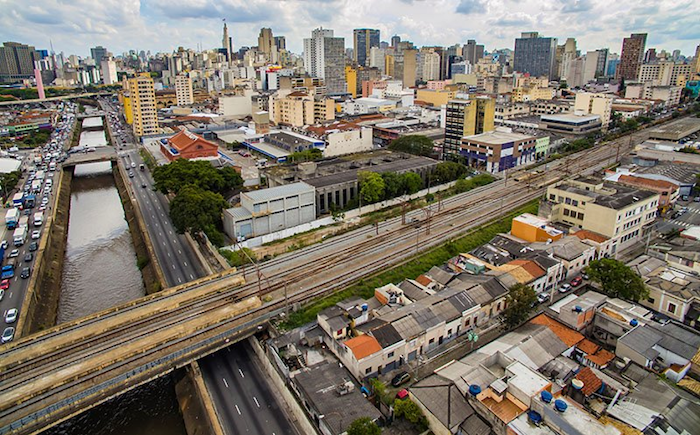This session aimed to generate discussions on different experiences of infrastructure development that addresses climate change in cities. It paid particular attention to new transportation “corridor” development, which has increasingly become popular as a way to redesign the rapidly growing city to reduce traffic congestions and thereby carbon emissions, promote affordable public transportation system, and to make public green spaces accessible for all the citizens. However, it is known that it significantly affects ways that urban land is used, accessed and governed by local communities. The session explored how the corridor development should address social equity and inclusion.
Key Takeaways
- Problem of scale: Infrastructure planning for sustainable and resilient city making needs to weigh the difference between intervention for the city as a whole and for vulnerable populations within the city.
- Timing of public participation: By now we all know that participatory infrastructure planning is important but the question of when this participation should take place the most effectively remains elusive. In particular, when large-scale infrastructure project decides to marginalize or even demolish one part of the city, affected citizens are always informed after such a decision is made – to agree on remedies such as compensation. Why don’t citizens participate from the design of infrastructure and urban spaces?
- Long term engagement: Considering the importance of temporalities and mobilities of urban dwellers, long-term observation and engagement by researchers, the government and civil society organizations must be envisioned.
- Building synergies between different infrastructures: We need more research to understand tradeoffs between different, old and new, or green and transport infrastructures. Even though infrastructure planning increasingly talks about climate change mitigation and/or adaptation, one infrastructure often undermines another infrastructure and space’s sustainability potential.
Sustainable corridors for all?
Kei Otsuki, International Development Studies, Utrecht University
In this introduction, the rationale of the panel was explained, drawing from a research project on a Bus Rapid Transit system in São Paulo, Brazil. The major question is how climate change concerns led to new transportation infrastructure planning in many cities while this is leading to proliferation of displacement. Communities and citizens increasingly demands alternative planning against the major infrastructure planning, which remains to be largely top-down or involve citizens only after major planning decisions had been made. The panel also aims to seek for the effective alternative planning that citizens take charge of their own, publicly accessible spaces and remain in control in collaboration with planners, investors and other actors.
Mobility justice in the face of the development corridor paradigm: Insights from the Kampala-Jinja Highway, Uganda
Ian Plekker, International Development Studies, Utrecht University
“The important question is how to establish a relationship between micro-scale everyday mobilities of people and large-scale infrastructure that aims to engineer mobilities in the city”
This presentation outlined three case studies of communities facing displacement in Kampala, Uganda due to the Kampala-Jinja Highway development. It highlighted differences that exist within each community to deal with changed mobilities/immobilities while from outside what communities faced seemed to be similar. In addition, the effects of gentrification through displacement and likely chains of displacement were observed. The implications of this finding are that it is important to incorporate intra-community mobilities and livelihoods and consider community participation in designing and governing urban spaces more seriously.
Assessment of Tejgaon old airport accessibility using Space Syntax: A part of proposed Green Network of Dhaka city, Bangladesh
Gourab Kundu, Department of Architecture, Bangladesh University of Engineering and Technology, Bangladesh
“‘Old airport, Tejgaon’ has high potential to become a successful urban park, and this could be an important part of Dhaka’s green corridor. However, for building a successful urban open space proper land governance should be ensured. Otherwise the concept of green corridor will be non-functional.”
Using Space Syntax methods, the presentation showed some scenarios of Dakha’s Tejgaon old airport’s possibilities to become a large public green space. The simulation shows the high potential. However, in reality, there are conflicting interests that do not allow this potential to become fully realized. More institutional improvements and policies that address land governance are necessary.
Building climate resilient communities through Water Sensitive public space design and activation: Public parks program in Bucaramanga, Colombia
Raul Marino, Faculty of International, Political and Urban Studies, Universidad del Rosario, Bogotá, Colombia
“Green infrastructure is an effective method of climate change adaptation in cities. But this is only successful when communities are involved in reclaiming the space and maintain the infrastructure.”
Drawing on three cases of green infrastructure and technology in the city of Bucaramanga in western Colombia, the presentation emphasized the importance of understanding infrastructure planning in relation to urban ecosystem, especially water flow. The importance of community participation in all the process of infrastructure planning from the design stage to the maintenance of the provided infrastructure is discussed.

